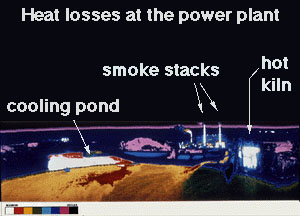Exploratour - Comparing the Surfaces of Earth and Mars
Click on image for full size
NASA/JPL
The graph to the left compares the size of the highest peaks of Earth and Mars. Mars Global Surveyor measured the size of Olympus Mons. The altitudes measured by the altimeter are shown in meters on the left-hand axis. Also shown for comparison is the altitude of the highest terrestrial peak, Mt. Everest. You can see that Olympus Mons is much higher than Mt. Everest (and Mauna Loa, from the ocean floor up!). Olympus Mons is also wider than the entire chain of Hawaiian Islands.
If you return to the first page of this tour and look at the comparison of images of Earth and Mars, you'll recall that Mars is about one-third the size of Earth. Considering that, it's remarkable that such a large volcano could exist on Mars.












